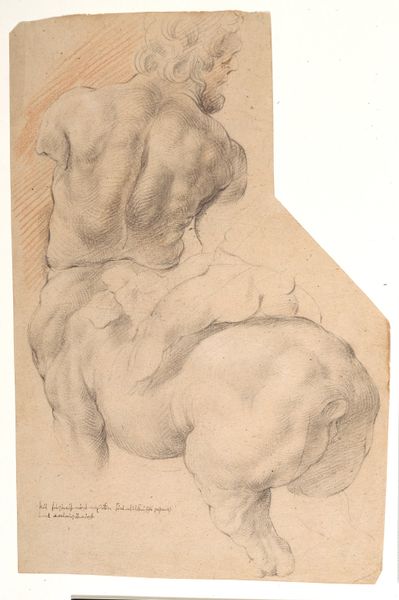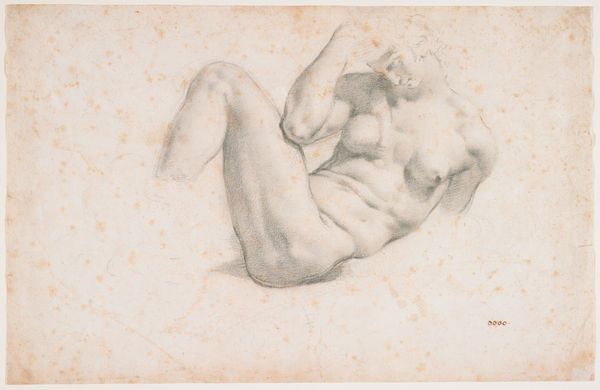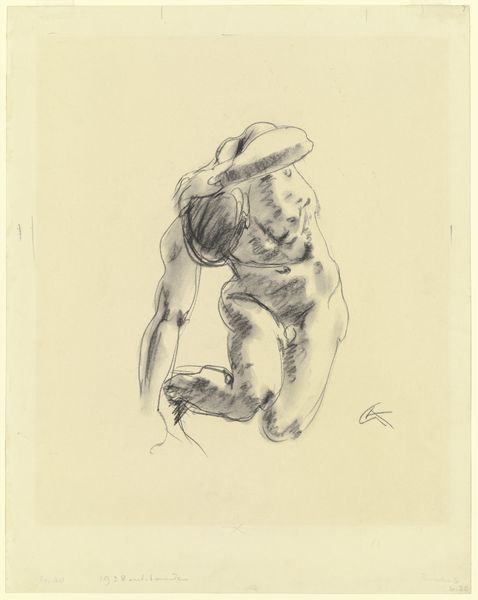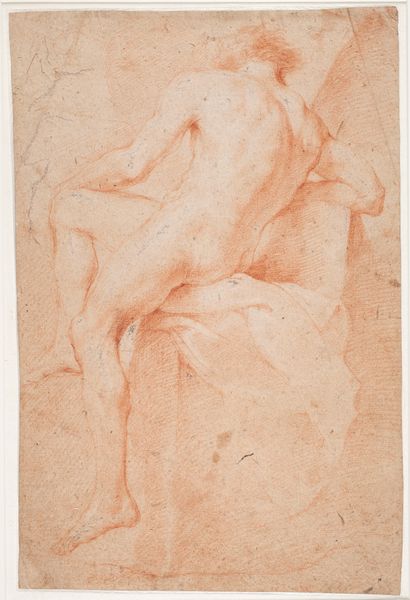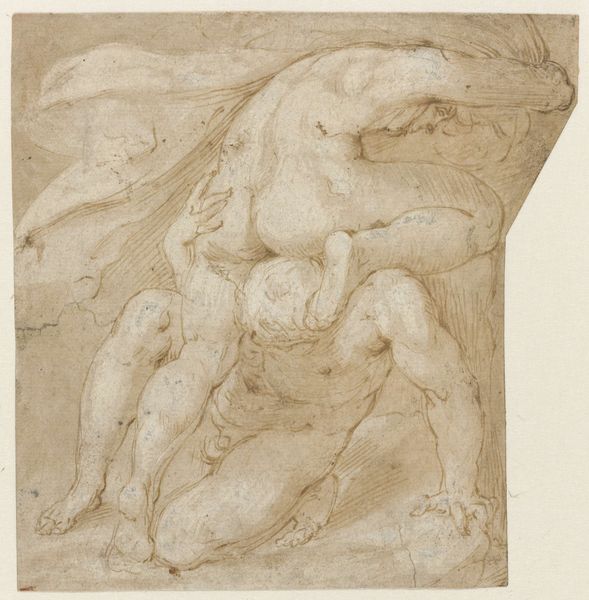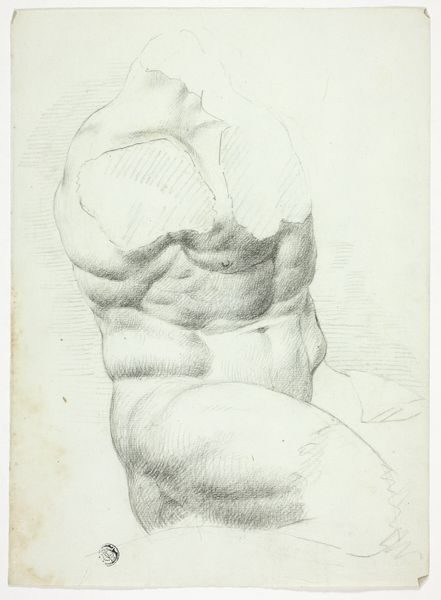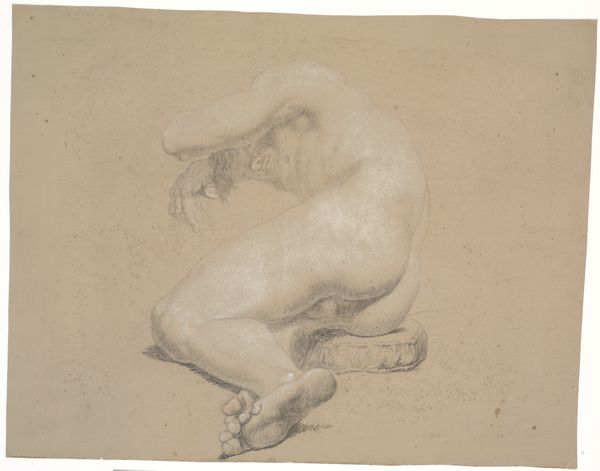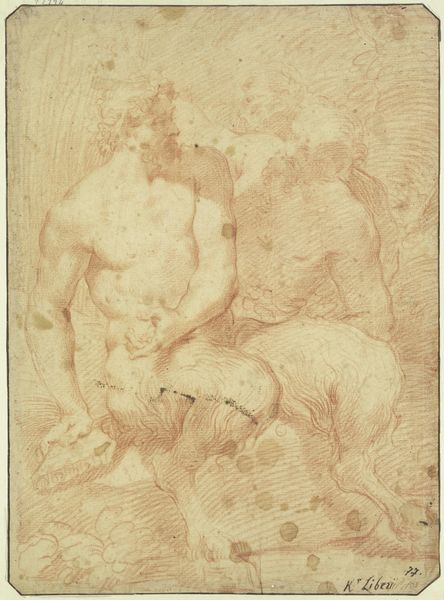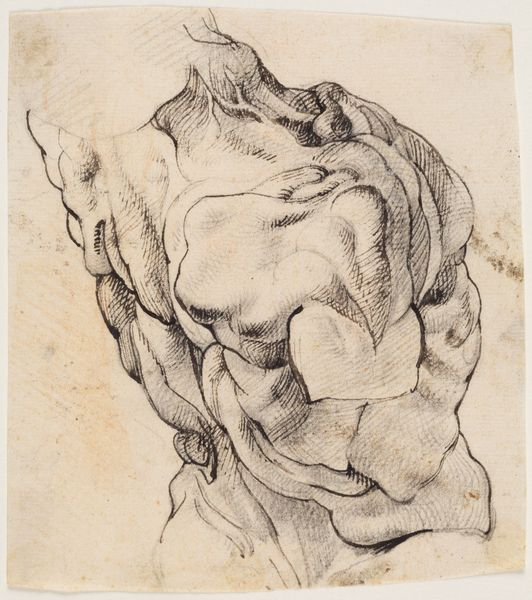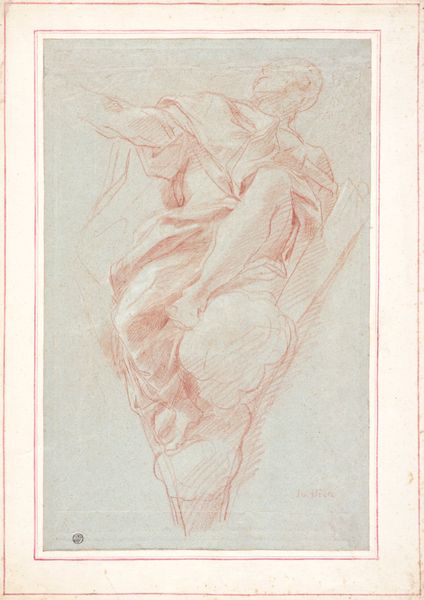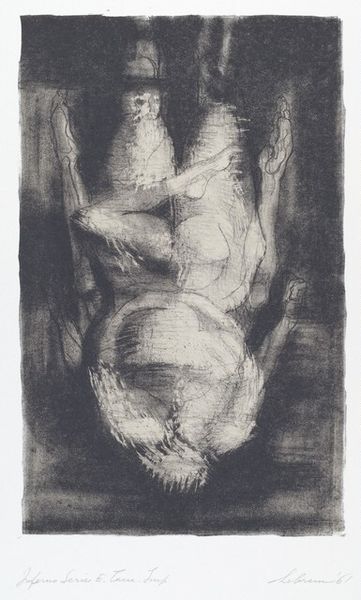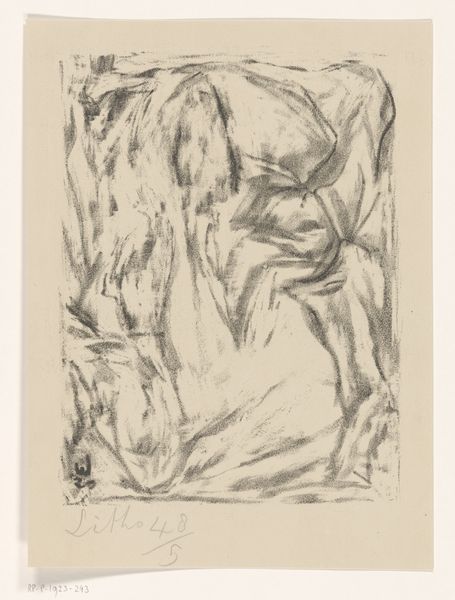
Kentaur betvunget af Amor. Antik skulpturgruppe set fra højre side 1628 - 1630
0:00
0:00
drawing, pencil
#
portrait
#
drawing
#
charcoal drawing
#
figuration
#
pencil drawing
#
pencil
#
portrait drawing
#
academic-art
Dimensions: 323 mm (height) x 392 mm (width) (bladmaal)
Willem Panneels created this drawing of a centaur and cupid in the early 17th century, using black and red chalk on paper. The choice of chalk is critical here. Unlike ink, which can create a sharp line, chalk gives a softer, more volumetric effect. Panneels uses the chalk to create a chiaroscuro effect, building up tone to suggest the muscularity of the centaur and the softness of Cupid’s skin. We can see how the artist carefully layered the chalk, building up the forms gradually through delicate strokes. It’s a process of accumulation, echoing the way a sculptor might slowly build up a form in clay. This drawing isn’t just a study of form, though; it also speaks to the artistic practices of the time. Artists like Panneels often made drawings after antique sculptures, using them as a way to learn from the past. In this case, he is not only documenting, but also interpreting the original sculpture, translating its three-dimensionality into the more intimate medium of drawing. It is through these processes of translation and reinterpretation that the artist has imbued the artwork with social and cultural significance.
Comments
No comments
Be the first to comment and join the conversation on the ultimate creative platform.
